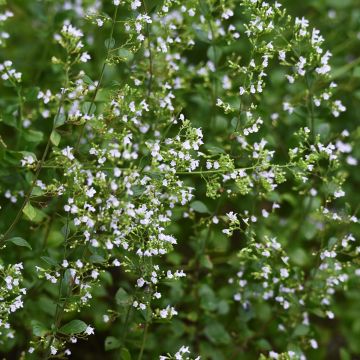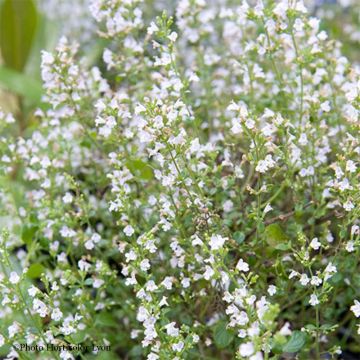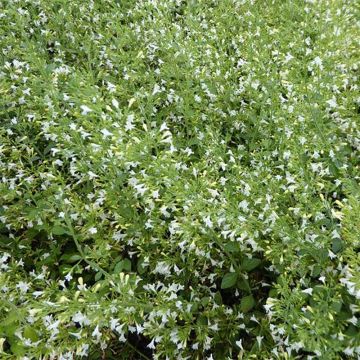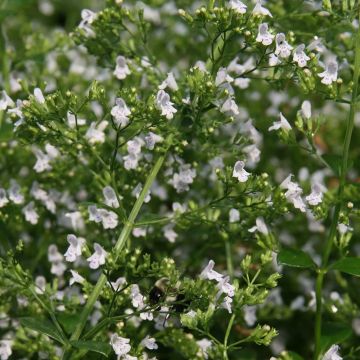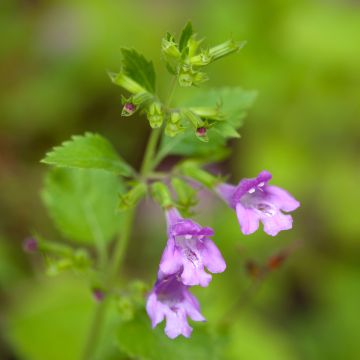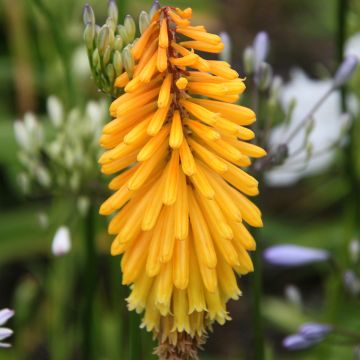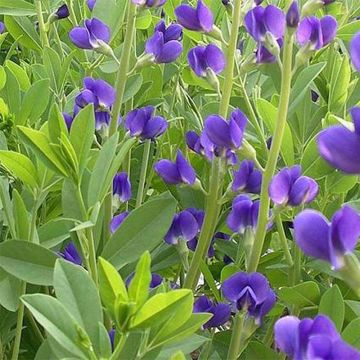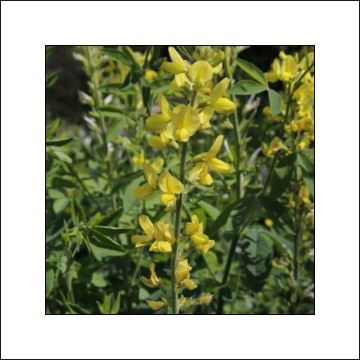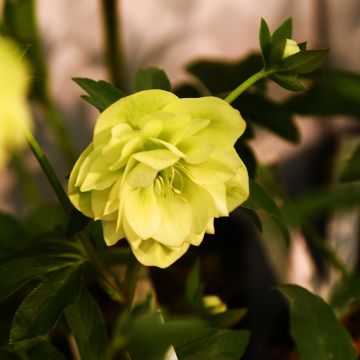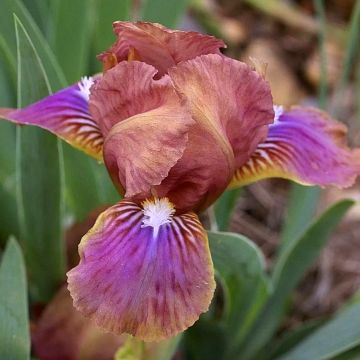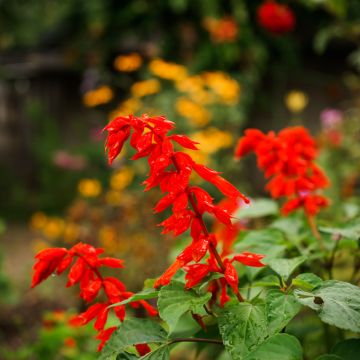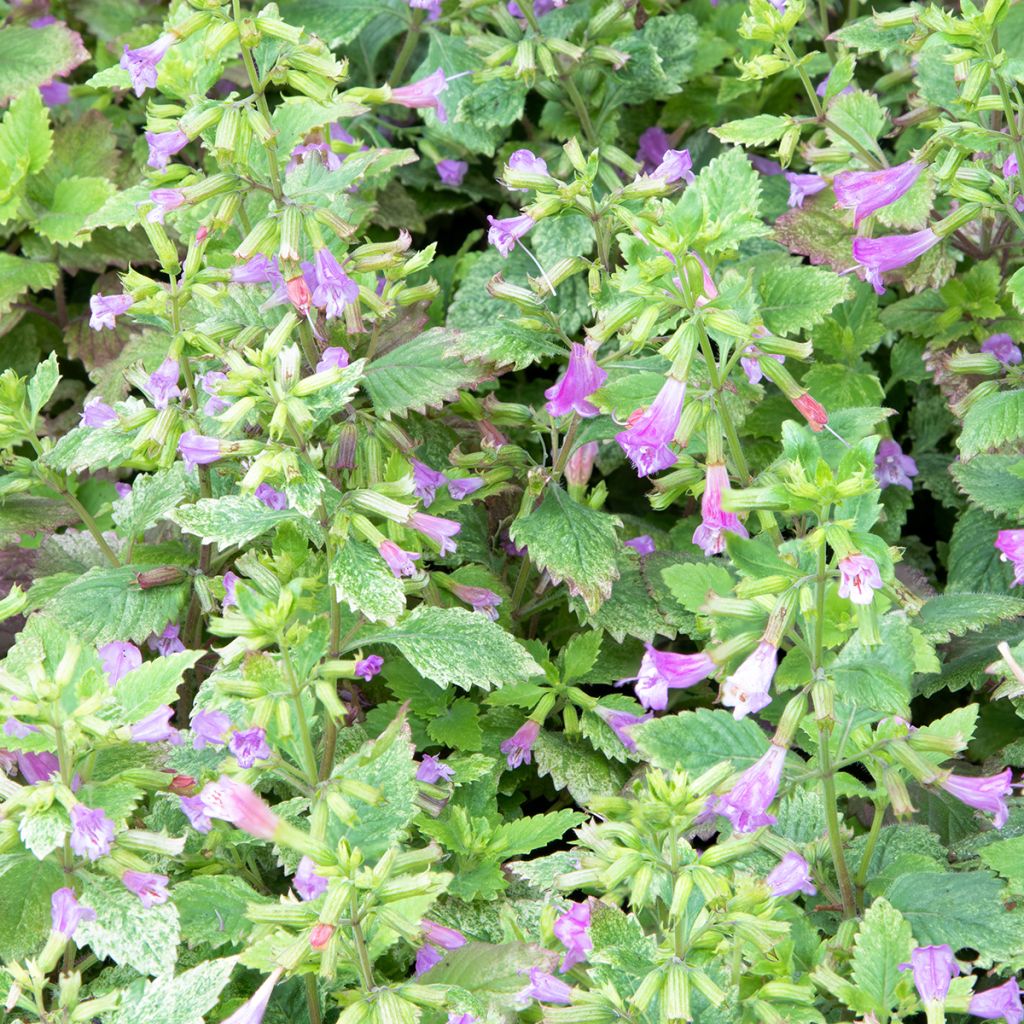

Calamintha grandiflora Variegata - Calamint
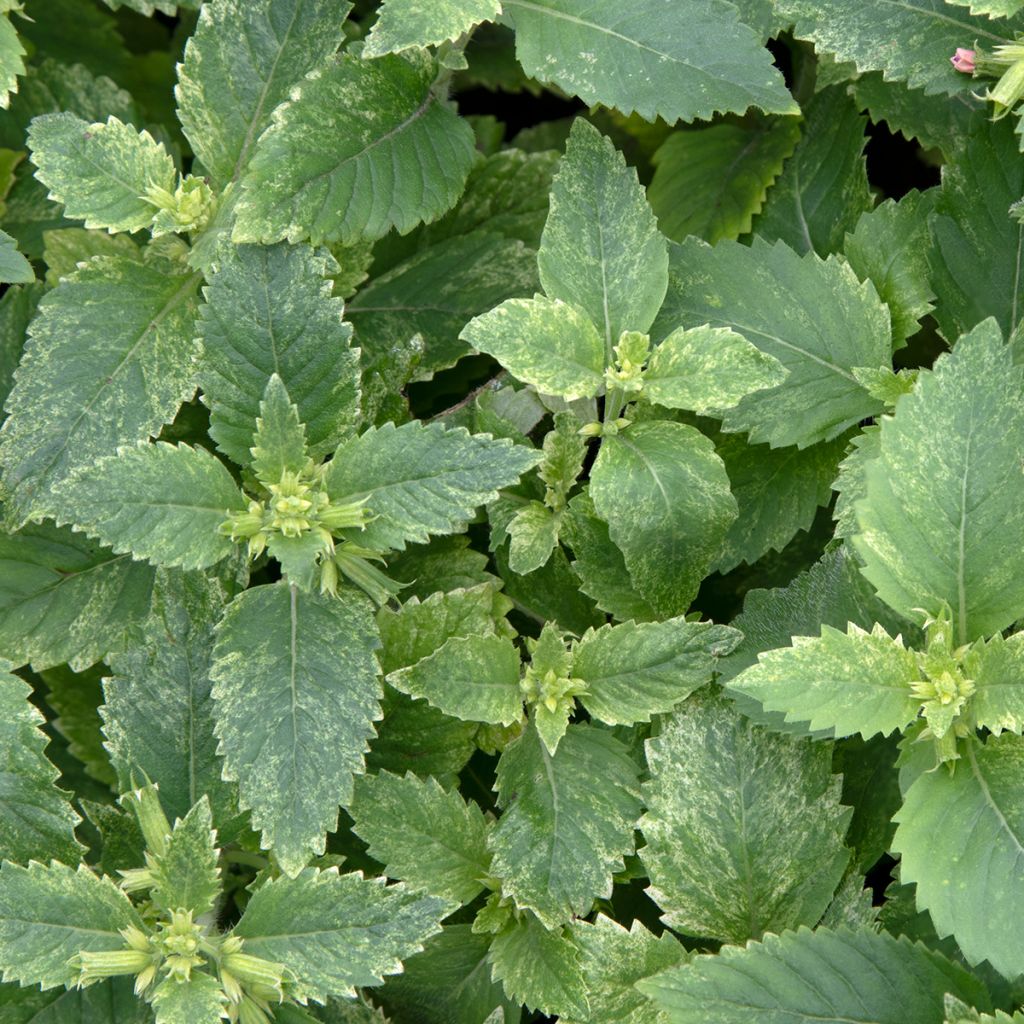

Calamintha grandiflora Variegata - Calamint
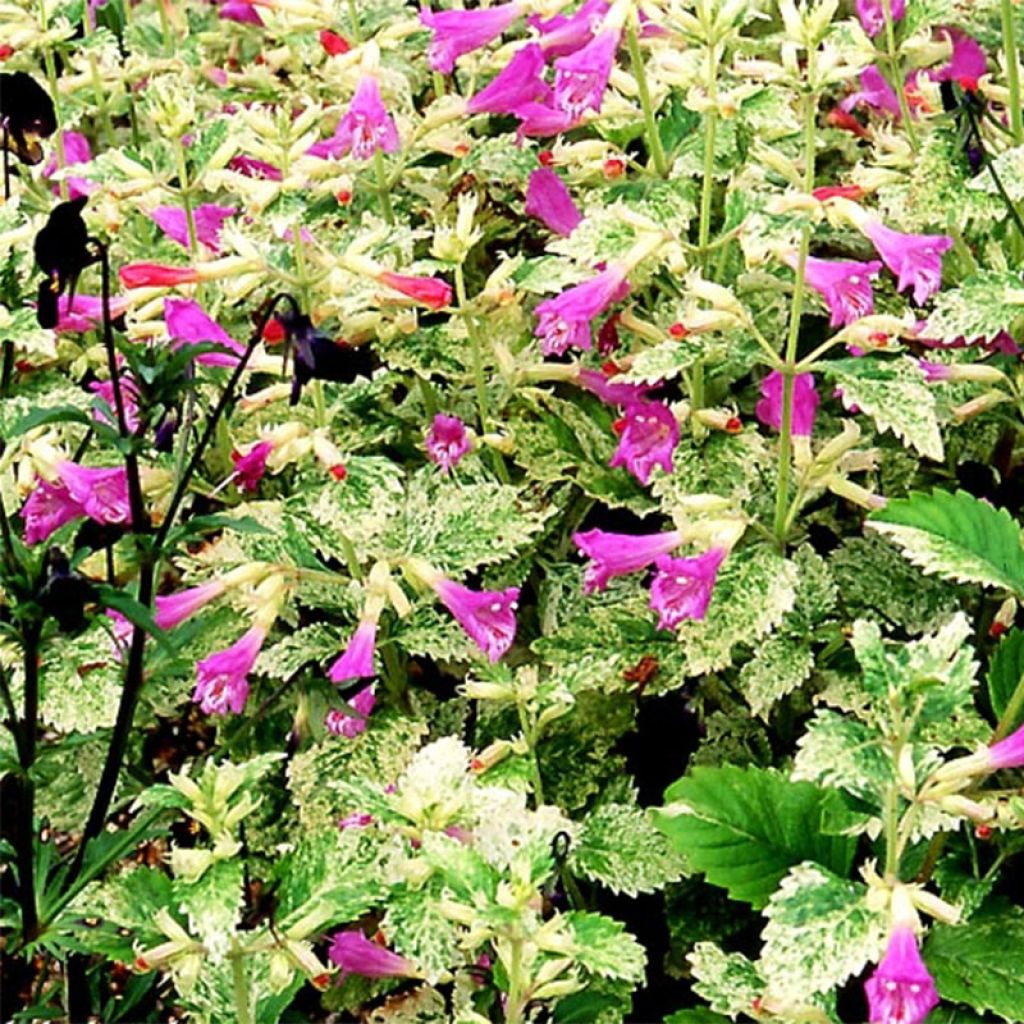

Calamintha grandiflora Variegata - Calamint
Calamintha grandiflora Variegata - Calamint
Calamintha grandiflora Variegata
Large-flowered Calamint
Plant conforme à la description, très bien emballée avec soin. Very satisfied.
Colette, 03/01/2019
This plant carries a 12 months recovery warranty
More information
We guarantee the quality of our plants for a full growing cycle, and will replace at our expense any plant that fails to recover under normal climatic and planting conditions.
From €5.90 for pickup delivery and €6.90 for home delivery
Express home delivery from €8.90.
Does this plant fit my garden?
Set up your Plantfit profile →
Description
Calamintha grandiflora Variegata, also known as Variegated Calamint, is a simply wonderful small bush, with a spicy mint fragrance, pale green wavy foliage splashed with cream and exquisite pink bell-shaped flowers that bloom from June to September. This perennial grows in dense clumps and is an aromatic plant, but does not have the invasive character of its relative, garden mint. It only requires a bit of warmth and well-drained soil at its roots and light shade, in the front of flower beds or in a rock garden.
Calamintha grandiflora 'Variegata' belongs to the Lamiaceae family. It is a cultivar derived from Calamintha grandiflora, which grows wild in the woods of southern Europe, North Africa, and the Middle East, up to Iran. Its trailing rhizomes produce densely clumped stems that can reach a height of 30 cm (12in) with a spread of 45 cm (18in). From June onwards, at the axils of the upper leaves, which all face the same direction and are arranged horizontally, loose clusters of bright pink flowers, measuring 25 to 35 mm (1in) in length, appear, attracting bees and butterflies. The leaves are deciduous, pale green variegated with cream, ovate with toothed edges, wavy, hairy, and measure 5 cm (2in) in length. The plant emits a fragrance of mint, lemon, and pepper.
Plant Variegated Calamint in moist but well-drained soil, in a sheltered position away from scorching sun and strong winds. Although very hardy, this plant does not appreciate heavy soils, waterlogged in winter. However, it tolerates limestone soils very well. To promote flower production, it may be useful to regularly remove faded flowers. Remove stems with non-variegated leaves, which have reverted to the original species. Cut back faded stems before winter, leaving the foliage to protect the crowns.
Variegated Catmint will find a place in flower beds in front of roses, in pots accompanied by Erigeron karvinskianus and Phlox subulata, near a pathway to fill the air with its fragrance when brushed against, in the border of a gravel path along with Teucrium chamaedrys and Origanum vulgare 'Country Cream', or in a rockery. In wet regions with heavy soil, these plants can be planted in a large rockery, a scree garden, a paved area, or on a well-exposed slope. And of course, this herb can be used in cooking to delicately flavour tabbouleh, infusions, drinks, and more.
Calamintha grandiflora is well-known in the Aubrac mountains, it also grows in the Alps (700 to 2,100 m (7ft) altitude), the Pyrenees, and the mountains of Corsica.
Report an error about the product description
Calamintha grandiflora Variegata - Calamint in pictures
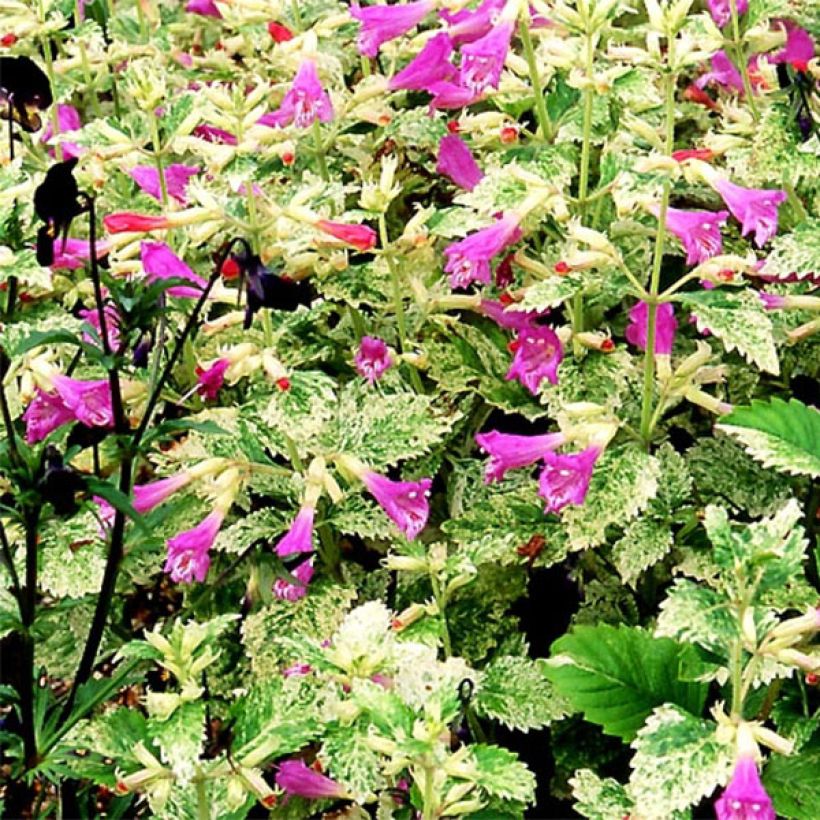

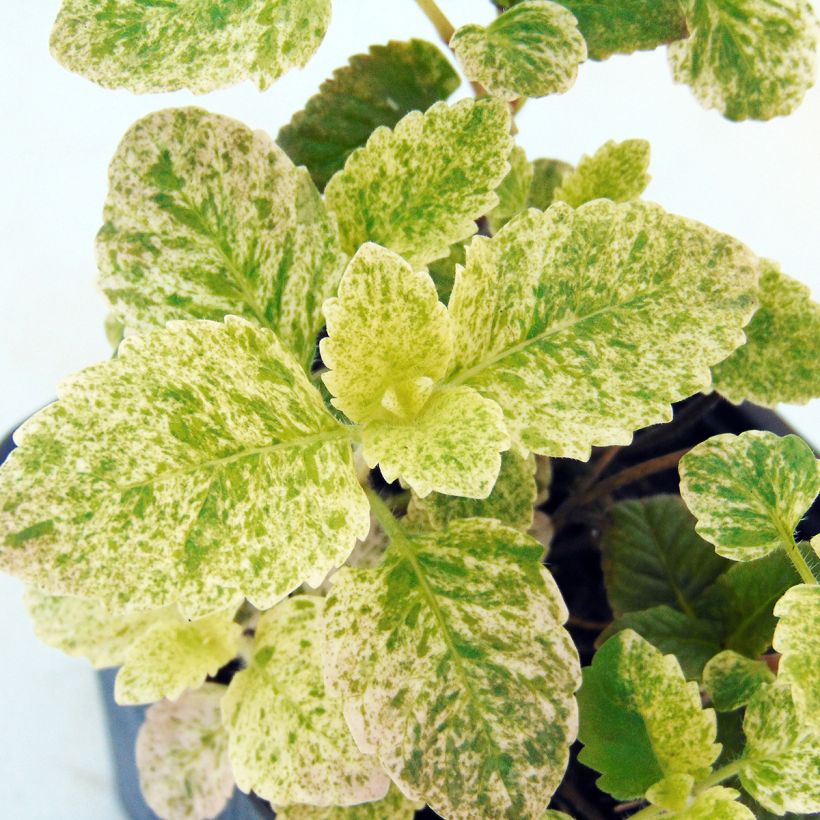

Flowering
Foliage
Plant habit
Botanical data
Calamintha
grandiflora
Variegata
Lamiaceae
Large-flowered Calamint
Mediterranean
Other Calamintha
Planting and care
Plant variegated calamintha in moist but well-drained soil, in a sheltered position away from scorching sun and strong winds. Although very hardy, this plant does not appreciate heavy soils, water-logged in winter. However, it thrives in limestone soils. To encourage flower production regularly remove faded flowers. Remove stems with non-variegated leaves, which have reverted to the original species. Cut back withered stems before winter and leave the foliage to protect the crown.
Planting period
Intended location
Care
-
, onOrder confirmed
Reply from on Promesse de fleurs
Spring flowering perennials
Haven't found what you were looking for?
Hardiness is the lowest winter temperature a plant can endure without suffering serious damage or even dying. However, hardiness is affected by location (a sheltered area, such as a patio), protection (winter cover) and soil type (hardiness is improved by well-drained soil).

Photo Sharing Terms & Conditions
In order to encourage gardeners to interact and share their experiences, Promesse de fleurs offers various media enabling content to be uploaded onto its Site - in particular via the ‘Photo sharing’ module.
The User agrees to refrain from:
- Posting any content that is illegal, prejudicial, insulting, racist, inciteful to hatred, revisionist, contrary to public decency, that infringes on privacy or on the privacy rights of third parties, in particular the publicity rights of persons and goods, intellectual property rights, or the right to privacy.
- Submitting content on behalf of a third party;
- Impersonate the identity of a third party and/or publish any personal information about a third party;
In general, the User undertakes to refrain from any unethical behaviour.
All Content (in particular text, comments, files, images, photos, videos, creative works, etc.), which may be subject to property or intellectual property rights, image or other private rights, shall remain the property of the User, subject to the limited rights granted by the terms of the licence granted by Promesse de fleurs as stated below. Users are at liberty to publish or not to publish such Content on the Site, notably via the ‘Photo Sharing’ facility, and accept that this Content shall be made public and freely accessible, notably on the Internet.
Users further acknowledge, undertake to have ,and guarantee that they hold all necessary rights and permissions to publish such material on the Site, in particular with regard to the legislation in force pertaining to any privacy, property, intellectual property, image, or contractual rights, or rights of any other nature. By publishing such Content on the Site, Users acknowledge accepting full liability as publishers of the Content within the meaning of the law, and grant Promesse de fleurs, free of charge, an inclusive, worldwide licence for the said Content for the entire duration of its publication, including all reproduction, representation, up/downloading, displaying, performing, transmission, and storage rights.
Users also grant permission for their name to be linked to the Content and accept that this link may not always be made available.
By engaging in posting material, Users consent to their Content becoming automatically accessible on the Internet, in particular on other sites and/or blogs and/or web pages of the Promesse de fleurs site, including in particular social pages and the Promesse de fleurs catalogue.
Users may secure the removal of entrusted content free of charge by issuing a simple request via our contact form.
The flowering period indicated on our website applies to countries and regions located in USDA zone 8 (France, the United Kingdom, Ireland, the Netherlands, etc.)
It will vary according to where you live:
- In zones 9 to 10 (Italy, Spain, Greece, etc.), flowering will occur about 2 to 4 weeks earlier.
- In zones 6 to 7 (Germany, Poland, Slovenia, and lower mountainous regions), flowering will be delayed by 2 to 3 weeks.
- In zone 5 (Central Europe, Scandinavia), blooming will be delayed by 3 to 5 weeks.
In temperate climates, pruning of spring-flowering shrubs (forsythia, spireas, etc.) should be done just after flowering.
Pruning of summer-flowering shrubs (Indian Lilac, Perovskia, etc.) can be done in winter or spring.
In cold regions as well as with frost-sensitive plants, avoid pruning too early when severe frosts may still occur.
The planting period indicated on our website applies to countries and regions located in USDA zone 8 (France, United Kingdom, Ireland, Netherlands).
It will vary according to where you live:
- In Mediterranean zones (Marseille, Madrid, Milan, etc.), autumn and winter are the best planting periods.
- In continental zones (Strasbourg, Munich, Vienna, etc.), delay planting by 2 to 3 weeks in spring and bring it forward by 2 to 4 weeks in autumn.
- In mountainous regions (the Alps, Pyrenees, Carpathians, etc.), it is best to plant in late spring (May-June) or late summer (August-September).
The harvesting period indicated on our website applies to countries and regions in USDA zone 8 (France, England, Ireland, the Netherlands).
In colder areas (Scandinavia, Poland, Austria...) fruit and vegetable harvests are likely to be delayed by 3-4 weeks.
In warmer areas (Italy, Spain, Greece, etc.), harvesting will probably take place earlier, depending on weather conditions.
The sowing periods indicated on our website apply to countries and regions within USDA Zone 8 (France, UK, Ireland, Netherlands).
In colder areas (Scandinavia, Poland, Austria...), delay any outdoor sowing by 3-4 weeks, or sow under glass.
In warmer climes (Italy, Spain, Greece, etc.), bring outdoor sowing forward by a few weeks.

































